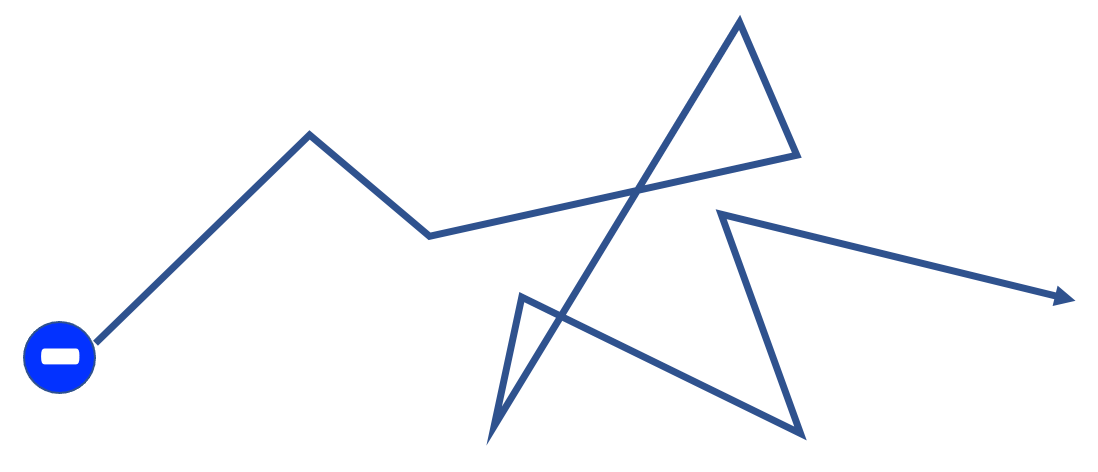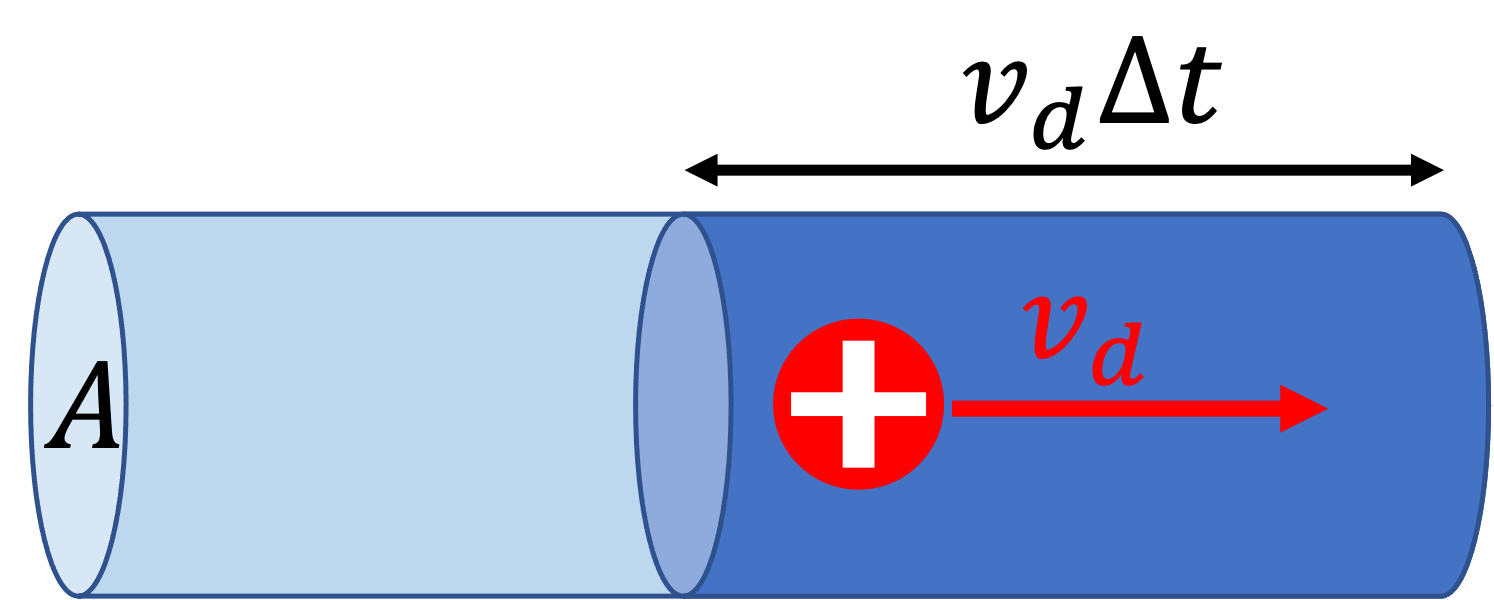Introduction
What is a current
- Current is the flow of electric charge.
- Current points in the direction of the flow of positive charges.
- Current points opposite to the direction of the flow of negative charges.
- Most currents in real life are caused by the flow of negatively charged electrons, each carrying $-e = -1.6\times 10^{-19}C$.
- In a fluid, ions (of both signs) could also carry current.
- In some semi-conductors, current could be carried by "holes" (regions with a deficiency in electrons), which act like positive charges.
Simulation - The Sign of the Charge Carriers
The Sign of the Charge Carriers
- Positive charges move in the same direction of the current.
- Negative charges move in the opposite direction of the current.
- Current always flows from high potential to low potential, independent of the sign of the charge carriers.
- Postive charges move from high potential to low potential, while negative charges climb from low potential to high potential.
- Electric field (not shown) always points in the same direction as the current.
Mathematically, we define the current $I$ as:
- SI unit: $A$ (Ampere).
- $1A = 1C/s$
- $\Delta q$ is the amount of charge flowing through in time $\Delta t$.
- If $I=5A$, it means there is $5C$ flowing through the wire per second.
Current density
Current density $j$ is the current per cross-sectional area of a conductor: $$ j = \frac{I}{A} $$ The unit is $A/m^2$.
Drift velocity

While an electron can travel in high velocity in a straight line in vacuum, inside a conductor it has numerous collisions with the atoms so it follows a zig-zag path. As a result the average velocity (called the drift velocity, $v_d$) an electron traveling from one side of a wire to the other could be quite slow, as seen in the example below. This is the microscopic origin of resistance.
However, we should not confuse the slow $v_d$ with the fluctuations of electric field, which travels at the speed of light. When you flip on a light switch, the resulting change in the electric field travels at the speed of light to the entire circuit in almost no time at all, causing a current almost instantaneously.

- The number of charge carriers per unit volume is $n$ (unit: $m^{-3}$), also known as the charge carrier density.
- For example, copper has $n = 8.5\times 10^{28} m^{-3}$, meaning in $1m^3$ of copper, you will find $8.5\times 10^{28}$ free electrons (electrons being the charge carriers in metal).
- Note the free electrons are not just any electrons. Most electrons in an atom are tightly bound to the nucleus and do not travel freely around. Only the electrons that are in the outermost shells may be loose enough to move around from one point of a conductor to another.
Consider a conductor that has charge carriers traveling to the right at $v_d$ on average as shown in the figure. In time $\Delta t$, the number of charge carriers passing through the right side of the wire is $N = n \times volume = n A v_d \Delta t$. If each charge carriers has charge $q$ (for example, $q=-1.6\times 10^{-19}C$ for an electron), then the total amount of charge carries by all of them is: $$ \begin{eqnarray} \Delta q &=& Nq \\ &=& (n A v_d \Delta t) (q) \\ \Rightarrow \frac{\Delta q}{\Delta t} &=& n q v_d A \\ \Rightarrow I &=& n q v_d A & \text{ because $I= \frac{dq}{dt}$} \end{eqnarray} $$ Not surprisingly, the current $I$ goes up with $v_d$. Note that if the charge carriers are negatively charged, i.e. $q\lt 0$, then $I$ and $v_d$ have the opposite signs, meaning they are in the opposite directions as explained before. One can also write the above equation in terms of the current density as $j = nqv_d$.